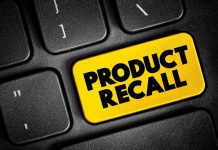
(BrightPress.org) – Toyota is issuing an important recall for roughly 50,000 of its vehicles after 30 deaths were linked to defective airbag inflators since 2009. The “Do Not Drive” warning applies to some of the car maker’s most popular models from 2003 to 2005. The inflator produced by Takata has been shown to explode.
Toyota said that in the event of an accident in which the airbag is deployed, the inflator is significantly likely to explode and throw off metal shrapnel. The impact from the fragments could cause severe injuries or death to the driver or anyone in the vehicle.
The affected models are the 2003-2004 Corollas, 2003-2004 Corolla Matrix, and 2004-2005 RAV4.
The faulty Takata airbag inflators triggered the largest automotive recall in history with over 100 million vehicles from 20 different auto manufacturers affected. In 2017, Takata filed for bankruptcy after over a decade of recalls, numerous civil lawsuits, and a US-based criminal investigation. Its remaining assets were liquidated and sold to the Chinese firm Key Safety Systems for a whopping total of $1.6 billion.
Toyota has been plagued with difficulties recently. The automotive industry leader suspended outgoing shipments of some vehicles due to problems with their certifications for diesel engines. It was discovered that some Toyota Industries employees artificially altered the results of a test for horsepower.
The engines in question are used in 10 different models sold around the world, including the Land Cruiser SUV and Hiace van.
Toyota is also attempting to resolve a misconduct issue that arose after it was discovered that a third-party company used for safety testing admitted the results were faked going back thirty years. That company, Daihatsu, was raided by Japanese authorities and had its certifications revoked.
President Koji Sato said that some employees felt pressured to cut corners as the industry is incredibly competitive. He said people in management and at the testing facility both failed to understand the purpose of safety certification.
Copyright 2024, BrightPress.org













